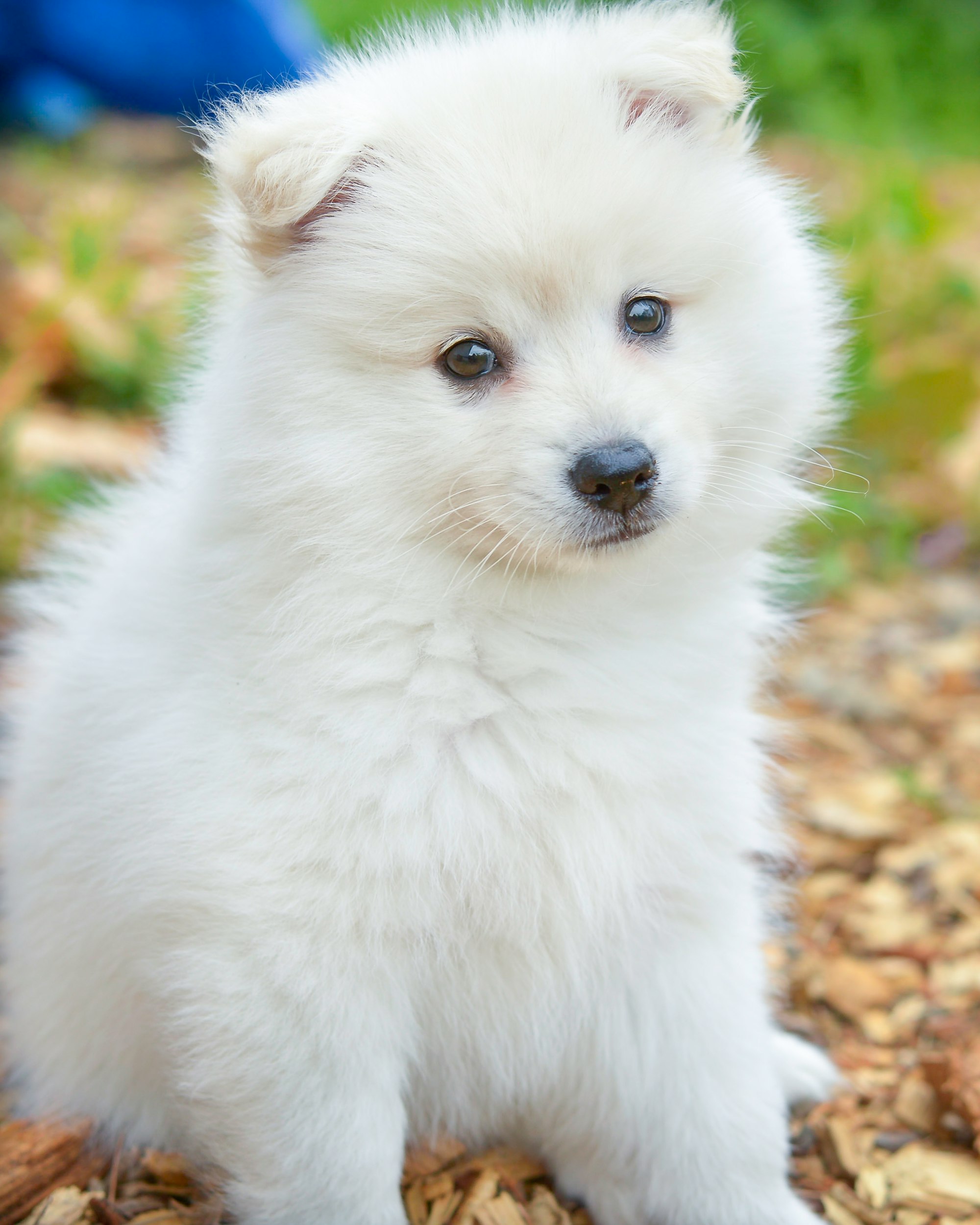In our homes, we often display flowers as a symbol of beauty, serenity, and love. But it's crucial to remember that what's pleasing to human eyes might pose dog health risks. It's a common, unsettling truth for dog owners. Notably, the pretty lilies you're thinking of adding to your bouquet can be dangerous. Yes, you read that right.
Understanding the Danger: Are All Lilies Toxic to Dogs?
To kick off this discussion, we need to ask: Are all lilies poisonous to dogs?
While not all lily varieties are toxic to dogs, some are, and it's essential to know which ones. The peace lily, calla lily, and lily of the valley are common lilies that can cause ill effects in dogs. These plants contain toxic elements that, when ingested by our furry friends, can lead to severe health issues.
The Science Behind the Lily Toxicity
So, what makes lilies dangerous to dogs? The answer lies in the specific compounds these flowers contain. When your dog ingests these compounds, it may experience symptoms ranging from mild irritation to severe kidney failure, a life-threatening condition.
The main culprit behind dog and lily toxicity is a type of alkaloid found predominantly in the lily of the valley. This compound affects the heart, causing symptoms like a slow heart rate, irregular rhythm, and even cardiac arrest.
On the other hand, peace lilies and calla lilies contain calcium oxalate crystals. When a dog chews on these plants, these sharp crystals can cause injury to the mouth, throat, and gastrointestinal tract, leading to symptoms such as drooling, difficulty swallowing, and vomiting.

Symptoms of Lily Poisoning in Dogs
Just like humans, dogs can show a variety of symptoms when they're unwell. If you suspect your pet has been around lilies, stay alert for the following signs:
- Vomiting
- Diarrhea
- Lack of appetite
- Dehydration
- Increased urination followed by decreased or no urination
- General weakness and lethargy
The Importance of Immediate Treatment
Remember, pet safety and lilies do not go hand in hand. If your dog ingests a lily, it's crucial to act fast. The severity of the situation relies heavily on the type of lily and the amount ingested. However, if you notice any of the symptoms mentioned above, seek immediate veterinary help.
Treatment usually involves inducing vomiting to prevent further absorption of the toxins. Intravenous fluid therapy can also be administered to flush out the toxins and support kidney function.
Can Dogs Touch Lilies?
What if your dog doesn't ingest a lily, but merely touches it?
While lilies are most dangerous when ingested, exposure to the pollen by merely brushing against the flower can be enough to cause irritation in some dogs.
Keep this in mind if you have a curious pup who might be tempted to sniff or paw at a vase of lilies on a table.
Pet-Friendly Flowers
For those of us who love both our dogs and our floral arrangements, fear not. Several gorgeous flowers are safe for pets. Some popular, non-toxic alternatives include roses, sunflowers, petunias, and snapdragons.
Pet-friendly flowers not only add beauty to your home but also provide peace of mind knowing that your furry family member is safe.
Prevention: Creating a Safe Environment for Dogs
So, how do we keep our pets safe from lilies and other poisonous plants?
The most effective way to prevent lily poisoning is to not have these plants in your house or yard. Before purchasing a plant, do a quick online search to check if it's safe for your furry friend.
Another prevention strategy is to train your dog not to chew on plants. Although training can take time and patience, it's a worthy investment to ensure your pet's safety. This is especially important if you live in an area with a variety of native plants, some of which could be toxic to dogs.
When Accidents Happen
Even with the best prevention strategies in place, accidents can still happen. Your dog might come across lilies while on a walk or at a friend's house.
If you suspect that your dog has ingested a lily or come into contact with its pollen, call your vet immediately. The sooner you act, the better the outcome for your pet.
Have a list of emergency vets and poison control hotlines readily available. Quick access to these numbers could make a big difference in a pet emergency.

Sharing the Knowledge
One of the most powerful tools in protecting dogs from lily toxicity is knowledge. Share what you've learned with your friends, family, and neighbors who own dogs. They may not be aware of the risks that lilies and other plants pose to their pets.
It's also beneficial to educate children about this issue. Kids can play a significant role in preventing pet poisonings by learning which plants are safe and which are not.
The Role of Vets and Pet Stores
Vets and pet stores also play a crucial role in spreading awareness about toxic plants. If you're a vet reading this, consider informing your clients about the dangers of lilies and other poisonous plants.
Pet stores can make a difference by providing information on plant toxicity to their customers. They can also consider stocking pet-friendly plants, making it easier for pet owners to create a safe environment for their furry friends.
Holistic Health: Beyond Just Lilies
While the focus of this article has been lilies and their toxicity, it's essential to consider the holistic health of your dog. Remember, what's harmful isn't limited to lilies. Many common household items, including certain foods, medications, and even cleaning supplies, can pose threats to our pets.
Kitchen Dangers
Many dog owners are unaware of the potential dangers lurking in their kitchens. Foods like chocolate, grapes, onions, and garlic are toxic to dogs and can cause severe health issues. Always keep these items out of your dog's reach and never feed them as treats, regardless of how much your pup begs!
Medications and Cleaning Supplies
Just like with small children, keep all medications and cleaning supplies out of your pet's reach. What's a simple pain reliever for us can be a life-threatening substance for them. And remember, their keen sense of smell might lead them to these substances even when they're not in plain sight.

A Home Safe for Pets
While it's crucial to know what specific items are harmful to your pets, it's equally important to make your home an overall safe environment for them. Secure all loose wires and small objects that your pet could chew on or swallow.
It's also a good idea to provide plenty of dog-friendly toys to keep them entertained and away from potentially harmful distractions.
Regular Check-ups: Catching Problems Early
Regular vet check-ups are an essential part of pet ownership. These visits allow for early detection of any potential health problems and ensure that your pet is up-to-date with vaccinations. Regular blood work, especially for older pets, can detect any abnormalities before they become serious issues.
A Deeper Dive: More about Dogs and Plant Toxicity
Lilies are just the tip of the iceberg when it comes to plant toxicity. There are many other plants commonly found in gardens and homes that can be hazardous to dogs. These include azaleas, daffodils, oleanders, sago palms, and tulips.
Just like with lilies, ingesting these plants can lead to various symptoms, including vomiting, diarrhea, drooling, seizures, and even coma or death in severe cases.
So, if you're a dog owner with a green thumb, take the time to research the plants you bring into your dog's environment. Ensure they're safe and pose no threat to your furry friend.
The Role of a Balanced Diet
While it's essential to avoid toxic plants, it's equally important to feed your dog a balanced and nutritious diet.
Dogs require a mix of proteins, carbohydrates, fats, vitamins, and minerals to maintain optimal health. A balanced diet can help strengthen their immune system, maintain a healthy weight, and reduce the risk of developing various health issues.
While it might be tempting to share your food with your dog, remember that their dietary needs differ from ours. Certain foods we enjoy can be harmful to them.
Therefore, always consult your vet or a pet nutritionist to determine the best diet for your dog, considering their breed, age, weight, and health status.
Consistent Exercise and Mental Stimulation
Just like humans, dogs need regular exercise and mental stimulation to stay healthy and happy.
Daily walks, playtime, and mental stimulation games can help keep your dog fit and prevent behavioral issues. Regular exercise can also reduce the risk of health problems such as obesity, heart disease, and arthritis.
Mental stimulation, through puzzle toys and learning new tricks, can help keep your dog's mind sharp and prevent boredom and destructive behavior.
Empower Yourself with Knowledge
Knowing more about potential hazards like lilies can empower you as a dog owner. This knowledge, coupled with prevention strategies, regular vet visits, a balanced diet, and regular exercise, can go a long way in ensuring your dog lives a long, healthy, and happy life.
Modern Pet Safety: Introducing Fi Dog Collars
While it's essential to keep our homes and gardens pet-friendly, what about when our dogs venture outside? Walks, park visits, and outdoor playtimes are all part of a dog's life. Here's where Fi Dog Collars come into play.
What is a Fi Dog Collar?
A Fi Dog Collar is a smart collar that uses GPS technology to keep track of your dog. This modern, tech-savvy device can offer an additional layer of protection for your pet and peace of mind for you.
How Can a Fi Dog Collar Improve Your Dog's Safety?
This smart collar can help ensure your dog's safety in several ways.
For starters, if your dog is a bit of an escape artist, the GPS feature will allow you to track their location in real time. If your dog wanders into an area where lilies or other toxic plants are prevalent, you can act quickly to prevent any potential mishaps.
Additionally, the Fi Dog Collar tracks your dog's activity levels, helping you keep an eye on their exercise and rest times. This data can be incredibly beneficial in maintaining your pet's overall health and detecting any potential health issues early.
Integrating Fi Dog Collars with a Healthy Lifestyle
Balancing physical exercise with safety is crucial for every pet. As we've discussed, regular exercise and mental stimulation are as important for dogs as a balanced diet and a safe environment.
Fi Dog Collars can assist in ensuring your dog gets enough exercise. It monitors the amount of steps your pet takes, allowing you to track if your furry friend is getting the physical activity they need.
Fi Dog Collar: A Modern Approach to Pet Safety
In the end, the Fi Dog Collar offers a unique, technologically advanced approach to pet safety. While the traditional methods of ensuring your pet's safety - like creating a safe home environment and avoiding potentially toxic plants like lilies - are irreplaceable, adding a Fi Dog Collar to your pet safety toolkit can bring an extra layer of security.
Conclusion:
In conclusion, our love for our furry companions dictates our commitment to their safety. This commitment begins with understanding the potential risks in their environment, such as the toxicity of lilies and other plants. It's crucial to make our homes and gardens safe for them by choosing pet-friendly plants and providing a hazard-free living environment.
But safety isn't limited to the home; it extends to their overall lifestyle. Ensuring our pets have access to clean water, a balanced diet, regular exercise, and mental stimulation is paramount for their wellbeing. Regular vet check-ups are also essential to monitor their health and detect any issues early.
For those adventurous pets who love the outdoors, or for dogs who are escape artists, technology offers an additional layer of protection. The Fi Dog Collar, with its GPS tracking and activity monitoring, can play a key role in ensuring our pets' safety and health.
Every decision we make can significantly impact our pets' lives. Whether it's the type of flowers we bring home, the diet we provide, or the tools we use to keep track of them, our choices can make all the difference. So, let's choose wisely, for our pets are worth it.




